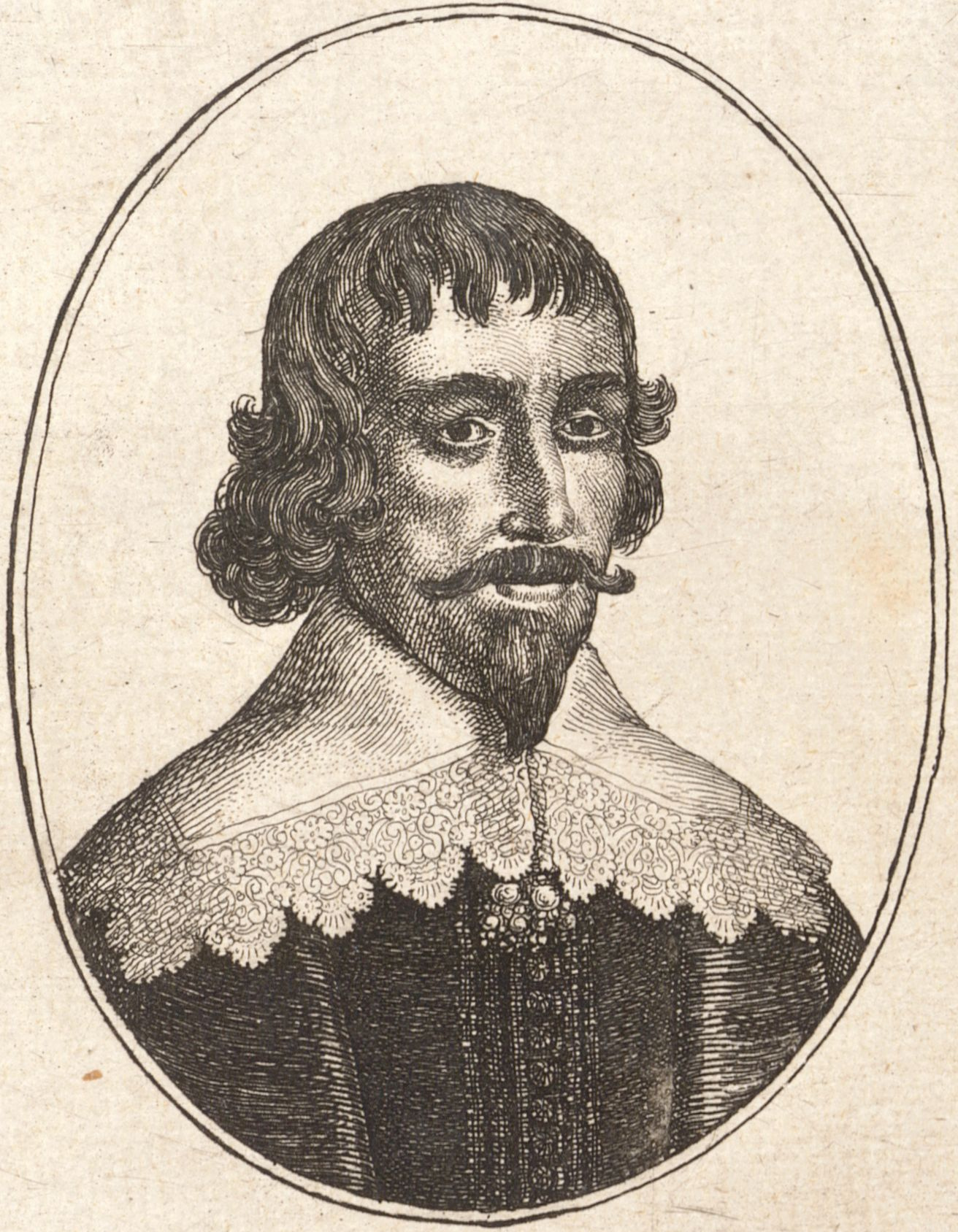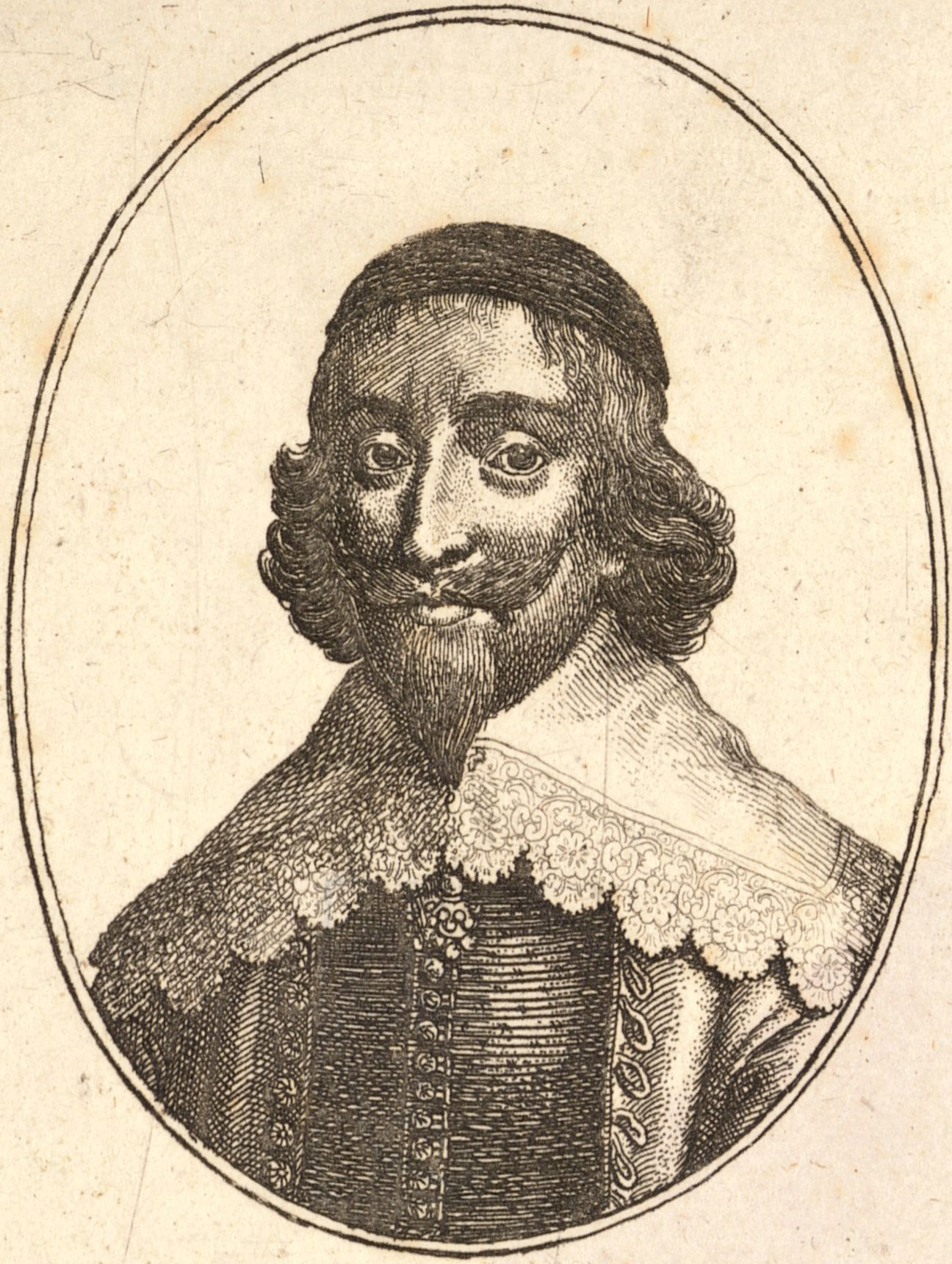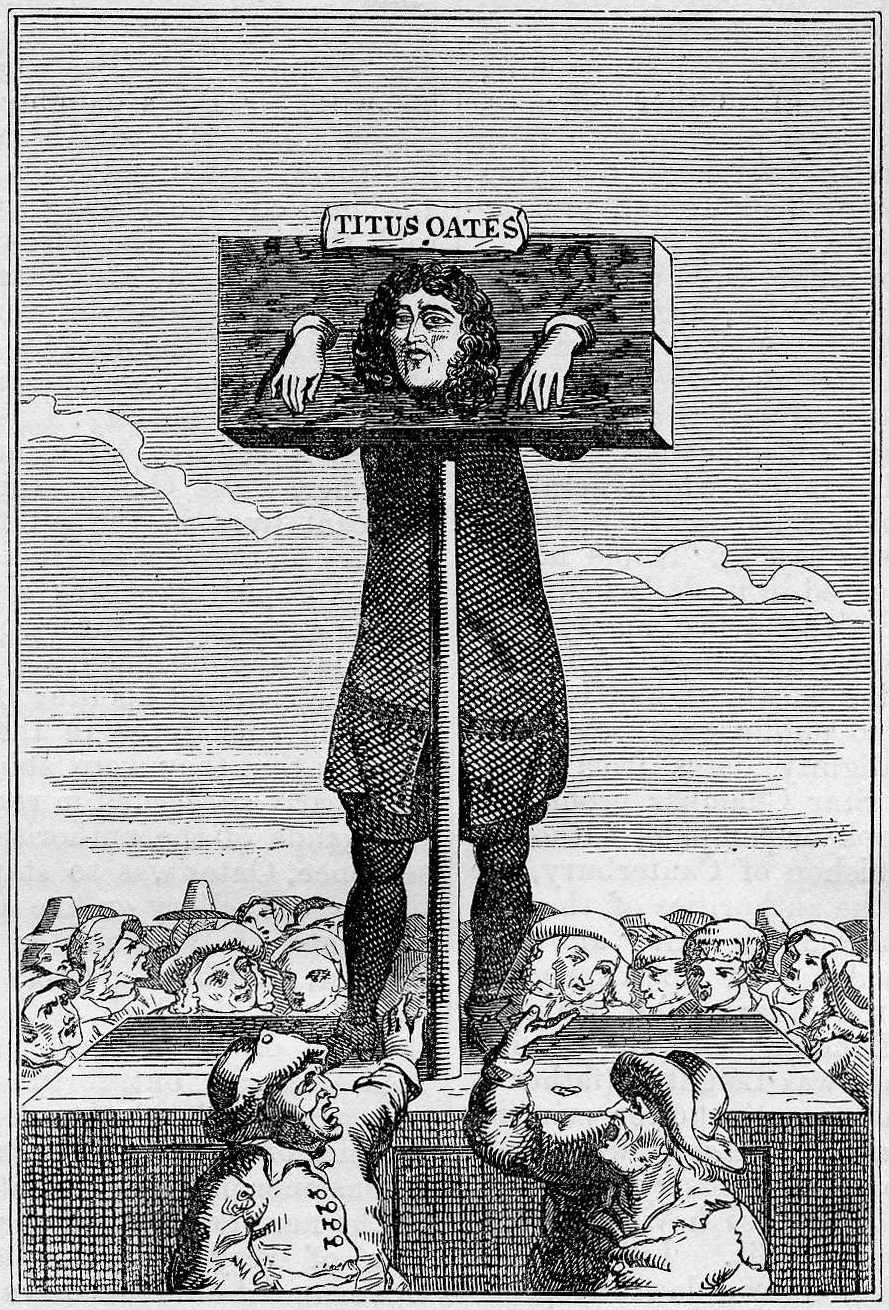|
William Prynne
William Prynne (1600 – 24 October 1669), an English lawyer, voluble author, polemicist and political figure, was a prominent Puritan opponent of church policy under William Laud, Archbishop of Canterbury (1633–1645). His views were presbyterian, but he became known in the 1640s as an Erastian, arguing for overall state control of religious matters. Early life Born at Swainswick, near Bath, Somerset, William Prynne was educated at Bath Grammar School and Oriel College, Oxford. He graduated as a BA on 22 January 1621, entered as a student of Lincoln's Inn in the same year, and was called to the bar in 1628. According to Anthony Wood, he was confirmed in his militant puritanism by the influence of John Preston, then a lecturer at Lincoln's Inn. In 1627 he published his first of over 200 works, a theological treatise titled ''The Perpetuity of a Regenerate Man's Estate''. This was followed in the next three years by three others attacking Arminianism and its teachers. In the ... [...More Info...] [...Related Items...] OR: [Wikipedia] [Google] [Baidu] |
Wenceslas Hollar - Prynne Cropped
Wenceslaus, Wenceslas, Wenzeslaus and Wenzslaus (and other similar names) are Latinized forms of the Czech name Václav. The other language versions of the name are german: Wenzel, pl, Wacław, Więcesław, Wieńczysław, es, Wenceslao, russian: Vyacheslav, hr, Vjenceslav, lt, Venckus among others. It originated as a Latin spelling for Czech rulers. It is a Slavic dithematic name (of two lexemes), derived from the Slavic words ''veli/vyache/więce/više'' ("great(er), large(r)"), and ''slava'' ("glory, fame"), both very common in Slavic names. It roughly means "greater glory". People named Wenceslaus or spelling variations thereof include: * Wenceslaus I, Duke of Bohemia (907–935 or 929), saint and subject of the Christmas carol "Good King Wenceslas" * Wenceslaus II, Duke of Bohemia (died 1192) * Wenceslaus I of Bohemia (c. 1205–1253), King of Bohemia * Wenceslaus II of Bohemia (1271–1305), King of Bohemia and Poland * Wenceslaus III of Bohemia (1289–1306), King of Hun ... [...More Info...] [...Related Items...] OR: [Wikipedia] [Google] [Baidu] |
Henrietta Maria
Henrietta Maria (french: link=no, Henriette Marie; 25 November 1609 – 10 September 1669) was Queen of England, Scotland, and Ireland from her marriage to King Charles I on 13 June 1625 until Charles was executed on 30 January 1649. She was mother of his sons Charles II and James II and VII. Contemporaneously, by a decree of her husband, she was known in England as Queen Mary, but she did not like this name and signed her letters "Henriette R" or "Henriette Marie R" (the "R" standing for ''regina'', Latin for "queen".) Henrietta Maria's Roman Catholicism made her unpopular in England, and also prohibited her from being crowned in a Church of England service; therefore, she never had a coronation. She immersed herself in national affairs as civil war loomed, and in 1644, following the birth of her youngest daughter, Henrietta, during the height of the First English Civil War, was compelled to seek refuge in France. The execution of Charles I in 1649 left her impoverished. ... [...More Info...] [...Related Items...] OR: [Wikipedia] [Google] [Baidu] |
John Bastwick
John Bastwick (1593–1654) was an English Puritan physician and controversial writer. Early life He was born at Writtle, Essex. He entered Emmanuel College, Cambridge, on 19 May 1614, but remained there only a very short time, and left the university without a degree. He travelled and served for a time as a soldier, probably in the Dutch army. He then studied medicine abroad, and took the degree of M.D. at Padua. Back in England in 1623, he settled at Colchester, where he practised as a physician. :s:Bastwick, John (DNB00) Career He was a Latin stylist, and began a career as controversial with Latin works. In 1634 he published in the Netherlands two anti-Catholic Latin treatises: ''Elenchus Religionis Papisticae'', an answer to a Catholic called Richard Short; and ''Flagellum Pontificis'', an argument in favour of Presbyterianism. The latter came under the notice of William Laud. He had Bastwick brought before the Court of High Commission, where he was convicted of a "scandalous ... [...More Info...] [...Related Items...] OR: [Wikipedia] [Google] [Baidu] |
Book Of Sports
The ''Declaration of Sports'' (also known as the ''Book of Sports'') was a declaration of James I of England issued just for Lancashire in 1617, nationally in 1618, and reissued by Charles I in 1633. It listed the sports and recreations that were permitted on Sundays and other holy days. Issue under James I It was originally issued in consultation with Thomas Morton, bishop of Chester, to resolve a dispute in Lancashire between the Puritans and the gentry (many of whom were Roman Catholics). The initial declaration was just for Lancashire, but in 1618, James made the declaration national. The 1618 declaration had largely the same main text as the 1617 version, but with an additional paragraph at the beginning explaining that the king had decided to make the declaration applicable to the whole of England. James transmitted orders to the clergy of the whole of England to read the declaration from the pulpit, but encountering strong opposition he withdrew his command. The declarat ... [...More Info...] [...Related Items...] OR: [Wikipedia] [Google] [Baidu] |
Archbishop Laud
William Laud (; 7 October 1573 – 10 January 1645) was a bishop in the Church of England. Appointed Archbishop of Canterbury by Charles I in 1633, Laud was a key advocate of Charles I's religious reforms, he was arrested by Parliament in 1640 and executed towards the end of the First English Civil War in January 1645. A firm believer in episcopalianism, or rule by bishops, "Laudianism" refers to liturgical practices designed to enforce uniformity within the Church of England, as outlined by Charles. Often highly ritualistic, these were precursors to what are now known as high church views. In theology, Laud was accused of Arminianism, favouring doctrines of the historic church prior to the Reformation and defending the continuity of the English Church with the primitive and medieval church, and opposing Calvinism. On all three grounds, he was regarded by Puritan clerics and laymen as a formidable and dangerous opponent. His use of the Star Chamber to persecute opponents such ... [...More Info...] [...Related Items...] OR: [Wikipedia] [Google] [Baidu] |
Pillory
The pillory is a device made of a wooden or metal framework erected on a post, with holes for securing the head and hands, formerly used for punishment by public humiliation and often further physical abuse. The pillory is related to the stocks. Etymology The word is documented in English since 1274 (attested in Anglo-Latin from ), and stems from Old French (1168; modern French , see below), itself from medieval Latin , of uncertain origin, perhaps a diminutive of Latin 'pillar, stone barrier'. Description Rather like the lesser punishment called the stocks, the pillory consisted of hinged wooden boards forming holes through which the head and/or various limbs were inserted; then the boards were locked together to secure the captive. Pillories were set up to hold people in marketplaces, crossroads, and other public places. They were often placed on platforms to increase public visibility of the person. Often a placard detailing the crime was placed nearby; these punishment ... [...More Info...] [...Related Items...] OR: [Wikipedia] [Google] [Baidu] |
Tower Of London
The Tower of London, officially His Majesty's Royal Palace and Fortress of the Tower of London, is a historic castle on the north bank of the River Thames in central London. It lies within the London Borough of Tower Hamlets, which is separated from the eastern edge of the square mile of the City of London by the open space known as Tower Hill. It was founded towards the end of 1066 as part of the Norman Conquest. The White Tower (Tower of London), White Tower, which gives the entire castle its name, was built by William the Conqueror in 1078 and was a resented symbol of oppression, inflicted upon London by the new Normans, Norman ruling class. The castle was also used as a prison from 1100 (Ranulf Flambard) until 1952 (Kray twins), although that was not its primary purpose. A grand palace early in its history, it served as a royal residence. As a whole, the Tower is a complex of several buildings set within two concentric rings of defensive walls and a moat. There were severa ... [...More Info...] [...Related Items...] OR: [Wikipedia] [Google] [Baidu] |
Star-chamber
The Star Chamber (Latin: ''Camera stellata'') was an English court that sat at the royal Palace of Westminster, from the late to the mid-17th century (c. 1641), and was composed of Privy Counsellors and common-law judges, to supplement the judicial activities of the common-law and equity courts in civil and criminal matters. It was originally established to ensure the fair enforcement of laws against socially and politically prominent people sufficiently powerful that ordinary courts might hesitate to convict them of their crimes. However, it became synonymous with social and political oppression through the arbitrary use and abuse of the power it wielded. In modern times, legal or administrative bodies with strict, arbitrary rulings, no "due process" rights to those accused, and secretive proceedings are sometimes metaphorically called "star chambers". Origin of the name The first reference to the "star chamber" is in 1398, as the ''Sterred chambre''; the more common form ... [...More Info...] [...Related Items...] OR: [Wikipedia] [Google] [Baidu] |
Attorney-general
In most common law jurisdictions, the attorney general or attorney-general (sometimes abbreviated AG or Atty.-Gen) is the main legal advisor to the government. The plural is attorneys general. In some jurisdictions, attorneys general also have executive responsibility for law enforcement, prosecutions or even responsibility for legal affairs generally. In practice, the extent to which the attorney general personally provides legal advice to the government varies between jurisdictions, and even between individual office-holders within the same jurisdiction, often depending on the level and nature of the office-holder's prior legal experience. Where the attorney general has ministerial responsibility for legal affairs in general (as is the case, for example, with the United States Attorney General or the Attorney-General for Australia, and the respective attorneys general of the states in each country), the ministerial portfolio is largely equivalent to that of a Minister of Justice ... [...More Info...] [...Related Items...] OR: [Wikipedia] [Google] [Baidu] |
William Noy
William Noy (1577 – 9 August 1634) was an English jurist. He was born on the family estate of Pendrea in St Buryan, Cornwall. He left Exeter College, Oxford, without taking a degree, and entered Lincoln's Inn in 1594. From 1603 until his death he was elected, with one exception, to each parliament, sitting invariably for a constituency of his native county. For several years his sympathies were in antagonism to the court party, yet every commission that was appointed numbered Noy among its members, and even those who were opposed to him in politics acknowledged his learning. A few years before his death he changed political allegiance, went over to the side of the court, and in October 1631 he was created Attorney-general, but was never knighted. It was through his advice that the impost of ship money was levied, resulting in a controversy that helped trigger the English Civil War. Noy suffered from stones, and died in great pain; he was buried at New Brentford Brentfor ... [...More Info...] [...Related Items...] OR: [Wikipedia] [Google] [Baidu] |
Charles I Of England
Charles I (19 November 1600 – 30 January 1649) was King of England, Scotland, and Ireland from 27 March 1625 until Execution of Charles I, his execution in 1649. He was born into the House of Stuart as the second son of King James VI of Scotland, but after his father inherited the English throne in 1603, he moved to England, where he spent much of the rest of his life. He became heir apparent to the kingdoms of England, Scotland, and Ireland in 1612 upon the death of his elder brother, Henry Frederick, Prince of Wales. An unsuccessful and unpopular attempt to marry him to the Spanish Habsburg princess Maria Anna of Spain, Maria Anna culminated in an eight-month visit to Spain in 1623 that demonstrated the futility of the marriage negotiation. Two years later, he married the House of Bourbon, Bourbon princess Henrietta Maria of France. After his 1625 succession, Charles quarrelled with the Parliament of England, English Parliament, which sought to curb his royal prerogati ... [...More Info...] [...Related Items...] OR: [Wikipedia] [Google] [Baidu] |
Nero
Nero Claudius Caesar Augustus Germanicus ( ; born Lucius Domitius Ahenobarbus; 15 December AD 37 – 9 June AD 68), was the fifth Roman emperor and final emperor of the Julio-Claudian dynasty, reigning from AD 54 until his death in AD 68. He was adopted by the Roman emperor Claudius at the age of 13 and succeeded him on the throne. Nero was popular with the members of his Praetorian Guard and lower-class commoners in Rome and its provinces, but he was deeply resented by the Roman aristocracy. Most contemporary sources describe him as tyrannical, self-indulgent, and debauched. After being declared a public enemy by the Roman Senate, he committed suicide at age 30. Nero was born at Antium in AD 37, the son of Gnaeus Domitius Ahenobarbus and Agrippina the Younger, a great-granddaughter of the emperor Augustus. When Nero was two years old, his father died. His mother married the emperor Claudius, who eventually adopted Nero as his heir; when Cla ... [...More Info...] [...Related Items...] OR: [Wikipedia] [Google] [Baidu] |








